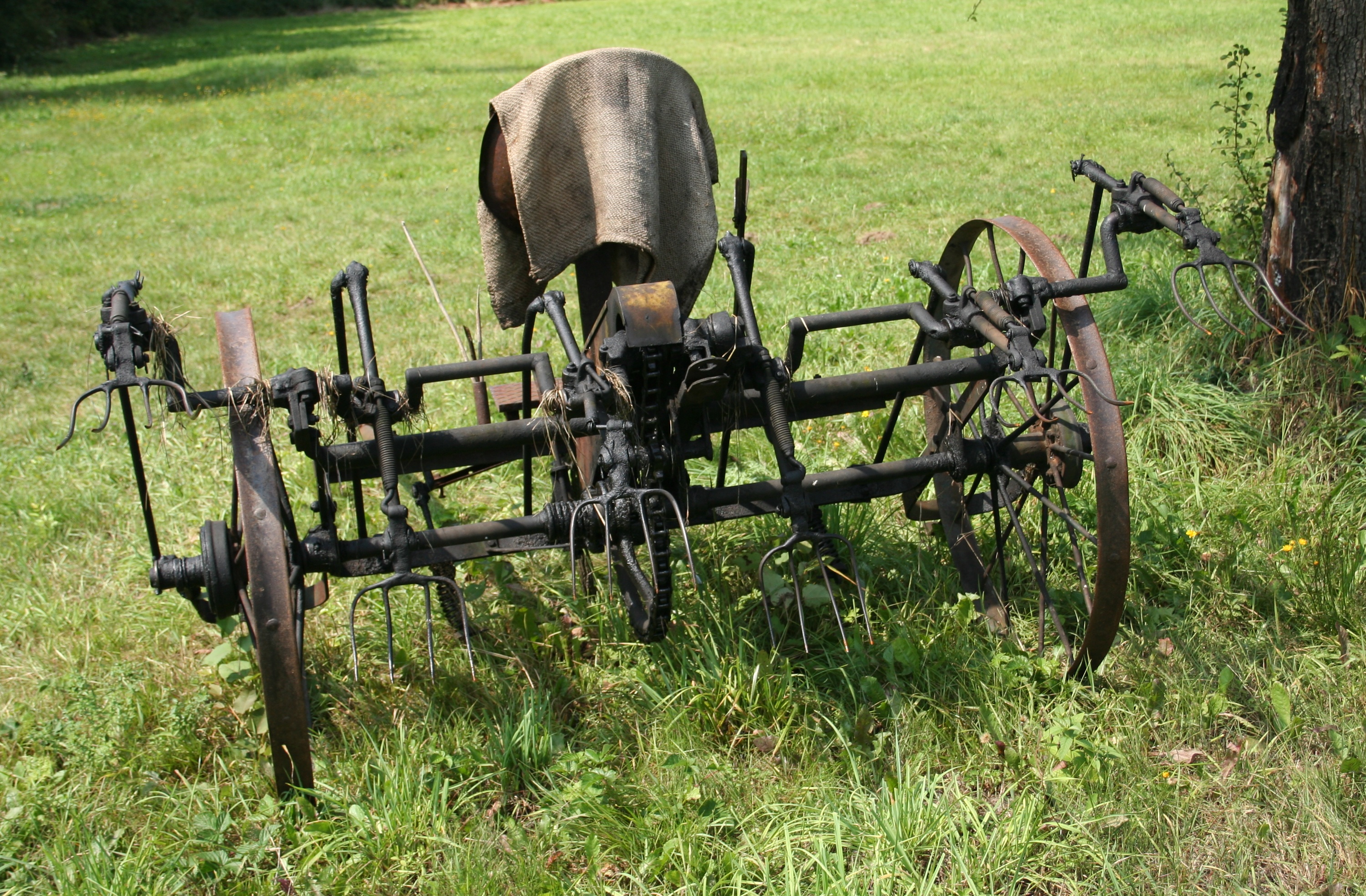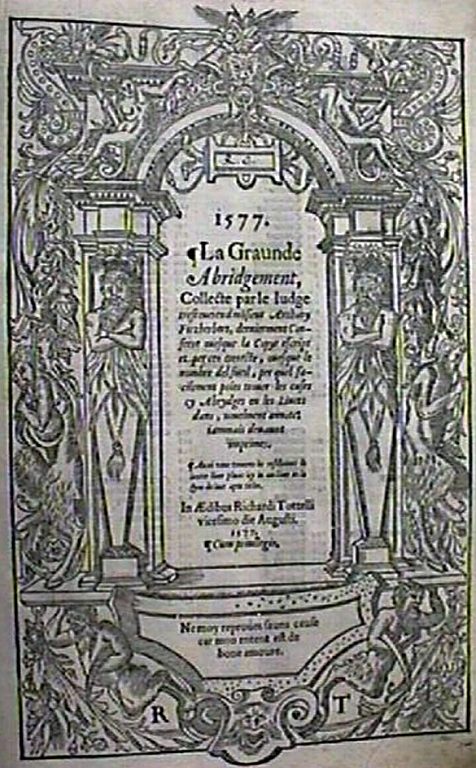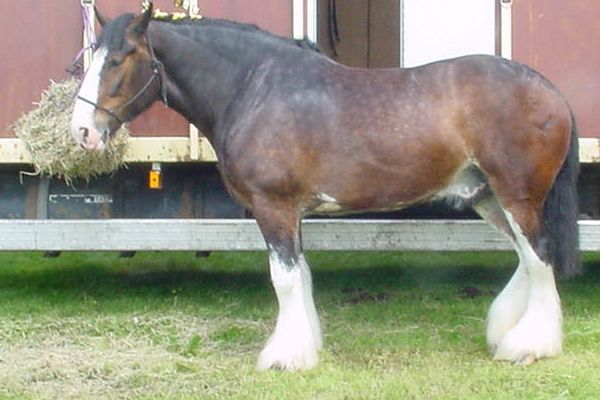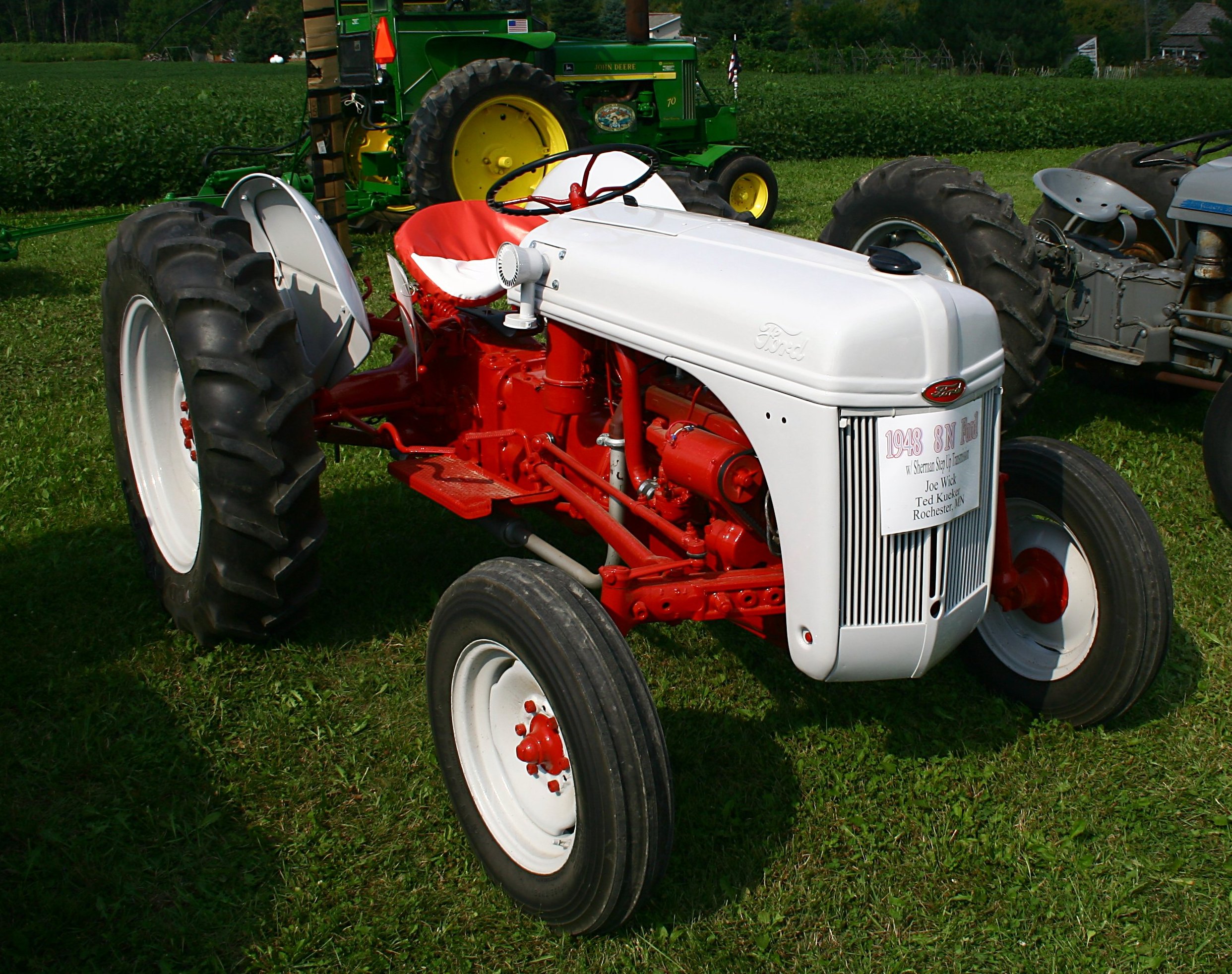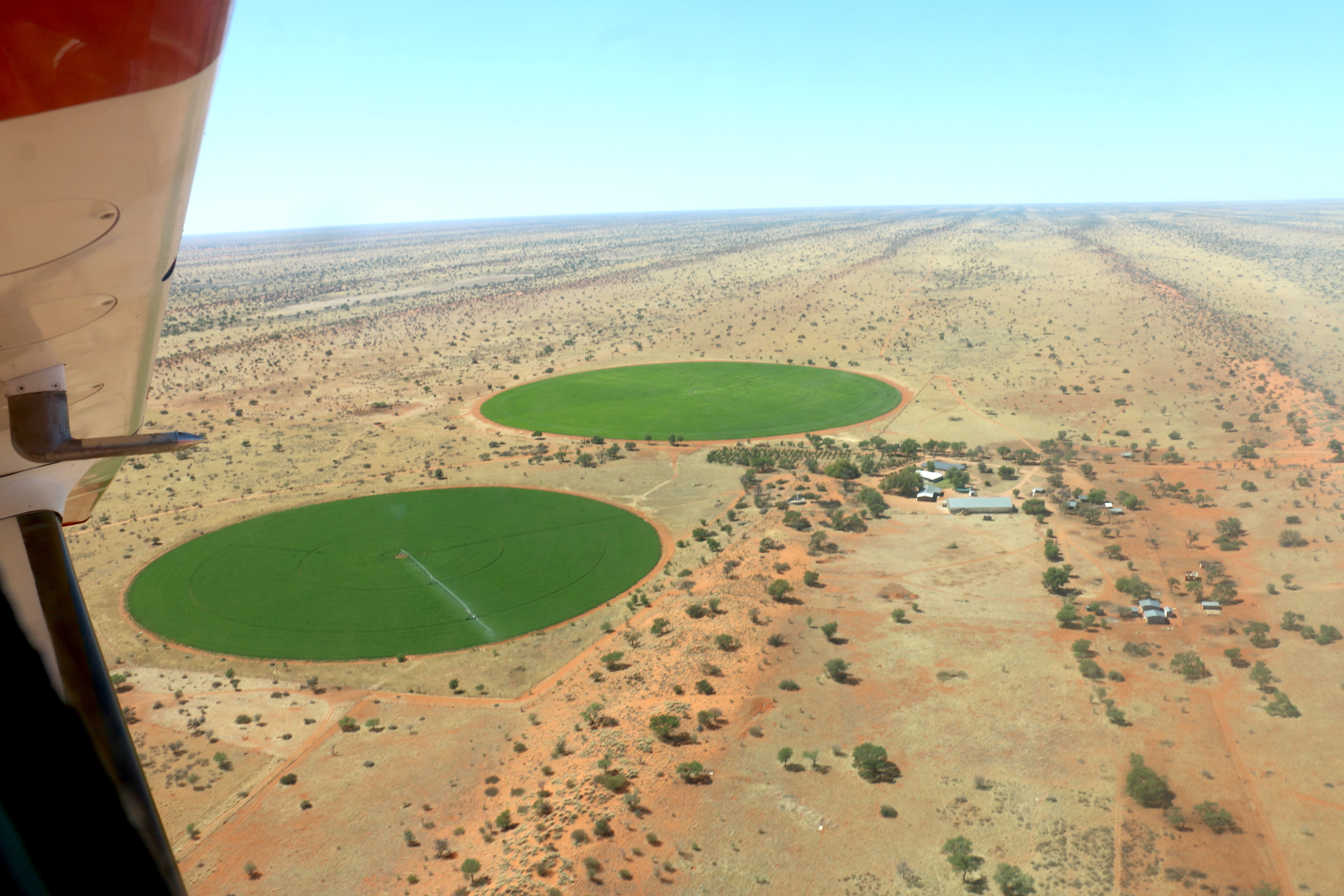|
Tedding
Tedding is the agricultural process of spreading material in a field. The materials which are typically tedded include manure, which is spread to fertilize the land, and crops such as hay and flax, which are spread to dry them before they are collected. Originally, this task would have been performed manually by farm labourers using tools such as pitchforks. In the 16th century, Sir Anthony Fitzherbert, in his ''Boke of Husbandry'', emphasised the importance of tedding for good hay: In the 19th century, farm machinery was introduced such as the manure spreader and tedder, which would be pulled by horses, traction engines or tractors. The handling of the crop will cause loss due to breakage of the plant, especially as it becomes dry and brittle. This especially affects the leaves of hay crops such as alfalfa Alfalfa () (''Medicago sativa''), also called lucerne, is a perennial plant, perennial flowering plant in the legume family Fabaceae. It is cultivated as an impor ... [...More Info...] [...Related Items...] OR: [Wikipedia] [Google] [Baidu] |
Tedder (machine)
A tedder (also called hay tedder) is a machine used in haymaking. It is used after cutting and before windrowing, and uses moving forks to aerate or "wuffle" the hay and thus speed drying before baling or rolling. The use of a tedder allows the hay to dry ("cure") better, which prevents mildew or fermentation. History The tedder came into use in the second half of the nineteenth century. While Charles Wendel claims in his ''Encyclopedia of American farm implements & antiques'' that the machine wasn't introduced to the United States until the 1880s, there are enough indications that the tedder was in use in the 1860s—''The New York Times'' reports on its efficacy in 1868, and in that same year the Annual Report of the Commissioner of Agriculture in Maine comments on the American-made Hubbard's hay tedder, which had been on the market since 1863; according to the Maine report, in 1859 the machine was "an implement lately imported from England." The action of the tedder is desc ... [...More Info...] [...Related Items...] OR: [Wikipedia] [Google] [Baidu] |
Manure
Manure is organic matter that is used as organic fertilizer in agriculture. Most manure consists of animal feces; other sources include compost and green manure. Manures contribute to the fertility of soil by adding organic matter and nutrients, such as nitrogen, that are utilised by bacteria, fungi, and other organisms in the soil. Higher organisms then feed on the fungi and bacteria in a chain of life that comprises the soil food web. Types There are in the 21st century three main classes of manures used in soil management: Animal manure Most animal manure consists of feces. Common forms of animal manure include farmyard manure (or farm slurry ( liquid manure). Farmyard manure also contains plant material (often straw), which has been used as bedding for animals and has absorbed the feces and urine. Agricultural manure in liquid form, known as slurry, is produced by more intensive livestock rearing systems where concrete or slats are used instead of straw bedding. M ... [...More Info...] [...Related Items...] OR: [Wikipedia] [Google] [Baidu] |
Flax
Flax, also known as common flax or linseed, is a flowering plant, ''Linum usitatissimum'', in the family Linaceae. It is cultivated as a food and fiber crop in regions of the world with temperate climates. In 2022, France produced 75% of the world's supply of flax. Textiles made from flax are known in English as linen and are traditionally used for bed sheets, underclothes, and table linen. Its oil is known as linseed oil. In addition to referring to the plant, the word "flax" may refer to the unspun fibers of the flax plant. The plant species is known only as a cultivated plant and appears to have been domesticated just once from the wild species '' Linum bienne'', called pale flax. The plants called "flax" in New Zealand are, by contrast, members of the genus '' Phormium''. Description Several other species in the genus ''Linum'' are similar in appearance to ''L. usitatissimum'', cultivated flax, including some that have similar blue flowers, and others with wh ... [...More Info...] [...Related Items...] OR: [Wikipedia] [Google] [Baidu] |
Pitchfork
A pitchfork or hay fork is an agricultural tool used to pitch loose material, such as hay, straw, manure, or leaves. It has a long handle and usually two to five thin tines designed to efficiently move such materials. The term is also applied colloquially, but inaccurately, to the garden fork. While similar in appearance, the garden fork is shorter and stockier than the pitchfork, with three or four thicker tines intended for turning or loosening the soil of gardens. Alternative terms In some parts of England, a pitchfork is known as a ''prong''. In parts of Ireland, the term ''sprong'' is used to refer specifically to a four-pronged pitchfork. Description The typical pitchfork consists of a wooden shaft bearing two to five slightly curved metal tines fixed to one end of a handle. These are typically made of steel, wrought iron, or some other alloy, though historically wood or bamboo were used. Unlike a garden fork, a pitchfork lacks a grab at the end of its handle ... [...More Info...] [...Related Items...] OR: [Wikipedia] [Google] [Baidu] |
Sir Anthony Fitzherbert
Sir Anthony Fitzherbert (147027 May 1538) was an English judge, scholar and legal author, particularly known for his treatise on English law, '' New Natura Brevium'' (1534). Biography Fitzherbert was the sixth son of Ralph Fitzherbert of Norbury, Derbyshire, and Elizabeth Marshall. His brothers died young so he succeeded his father as Lord of the manor of Norbury, an estate granted to the family in 1125. Wood states that he was educated at Oxford, but no evidence of this exists; nor is it known at which of the inns of court he received his legal training, though he is included in a list of Gray's Inn readers. Fitzherbert was called to the degree of serjeant-at-law, 18 November 1510, and six years later he was appointed king's serjeant. In 1514 he published ''La Graunde Abridgement'', described below. In 1522 he was made a judge of common pleas and was knighted; but his new honours did not check his literary activity and in the following year (1523) he published three works: o ... [...More Info...] [...Related Items...] OR: [Wikipedia] [Google] [Baidu] |
Manure Spreader
A manure spreader, muck spreader, or honey wagon is an agricultural machine used to distribute manure over a field as a fertilizer. A typical (modern) manure spreader consists of a trailer towed behind a tractor with a rotating mechanism driven by the tractor's power take off (PTO). Truck mounted manure spreaders are also common in North America. Operation Manure spreaders began as ground-driven units which could be pulled by a horse or a team of horses. Many of these ground-driven spreaders are still produced today, mostly in the form of small units that can be pulled behind a larger garden tractor or an all terrain vehicle (ATV). In recent years hydraulic and PTO driven units have been developed to offer variable application rates. Several models are also designed with removable rotating mechanisms (beaters), attachable side extensions, and tailgates for hauling chopped forages, cereal grains, and other crops. A typical (modern) manure spreader consists of a trailer towed ... [...More Info...] [...Related Items...] OR: [Wikipedia] [Google] [Baidu] |
Draft Horse
A draft horse (US) or draught horse (UK), also known as dray horse, carthorse, work horse or heavy horse, is a large horse bred to be a working animal hauling freight and doing heavy agricultural tasks such as plowing. There are a number of breeds, with varying characteristics, but all share common traits of strength, patience, and a docile temperament. While indispensable to generations of pre-industrial farmers, draft horses are used today for a multitude of purposes, including farming, draft horse showing, logging, recreation, and other uses. Draft breeds have been crossbred with light riding breeds such as the Thoroughbred to create sport horses or warmbloods. While most draft horses are used for driving, they can be ridden and some of the lighter draft breeds are capable performers under saddle. Characteristics Draft horses are recognizable by their extremely muscular build. They tend to have broad, short backs with powerful hindquarters. In general, they are t ... [...More Info...] [...Related Items...] OR: [Wikipedia] [Google] [Baidu] |
Traction Engine
A traction engine is a steam engine, steam-powered tractor used to move heavy loads on roads, plough ground or to provide power at a chosen location. The name derives from the Latin ''tractus'', meaning 'drawn', since the prime function of any traction engine is to draw a load behind it. They are sometimes called road locomotives to distinguish them from railway steam locomotive, locomotives – that is, steam engines that run on rails. Traction engines tend to be large, robust and powerful, but also heavy, slow, and difficult to manoeuvre. Nevertheless, they revolutionized agriculture and road haulage at a time when the only alternative Prime mover (tractor unit), prime mover was the draught horse. They became popular in industrialised countries from around 1850, when the first self-propelled portable steam engines for agricultural use were developed. Production continued well into the early part of the 20th century, when competition from internal combustion engine-powered ... [...More Info...] [...Related Items...] OR: [Wikipedia] [Google] [Baidu] |
Tractor
A tractor is an engineering vehicle specifically designed to deliver a high tractive effort (or torque) at slow speeds, for the purposes of hauling a Trailer (vehicle), trailer or machinery such as that used in agriculture, mining or construction. Most commonly, the term is used to describe a farm vehicle that provides the power and traction to mechanization, mechanize agricultural tasks, especially (and originally) tillage, and now many more. List of agricultural machinery, Agricultural implements may be towed behind or mounted on the tractor, and the tractor may also provide a source of power if the implement is mechanised. Etymology The word ''tractor'' was taken from Latin, being the Agent (grammar), agent noun of ''trahere'' "to pull". The first recorded use of the word meaning "an engine or vehicle for pulling wagons or plows" occurred in 1896, from the earlier term "traction engine, traction motor" (1859). National variations In the United Kingdom, UK, Republic of ... [...More Info...] [...Related Items...] OR: [Wikipedia] [Google] [Baidu] |
Alfalfa
Alfalfa () (''Medicago sativa''), also called lucerne, is a perennial plant, perennial flowering plant in the legume family Fabaceae. It is cultivated as an important forage crop in many countries around the world. It is used for grazing, hay, and silage, as well as a green manure and cover crop. The name alfalfa is used in North America. The name lucerne is more commonly used in the United Kingdom, South Africa, Australia, and New Zealand. The plant superficially resembles clover (a cousin in the same family), especially while young, when glossary of leaf morphology#trifoliate, trifoliate leaves comprising round leaflet (botany), leaflets predominate. Later in maturity, leaflets are elongated. It has raceme, clusters of small purple flowers followed by fruits spiralled in two to three turns containing 10–20 seeds. Alfalfa is native to warmer temperate climates. It has been cultivated as livestock fodder since at least the era of the Ancient Greece, ancient Greeks and Ancient R ... [...More Info...] [...Related Items...] OR: [Wikipedia] [Google] [Baidu] |

